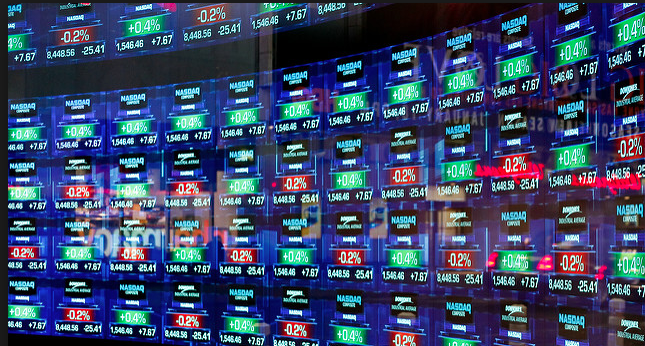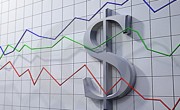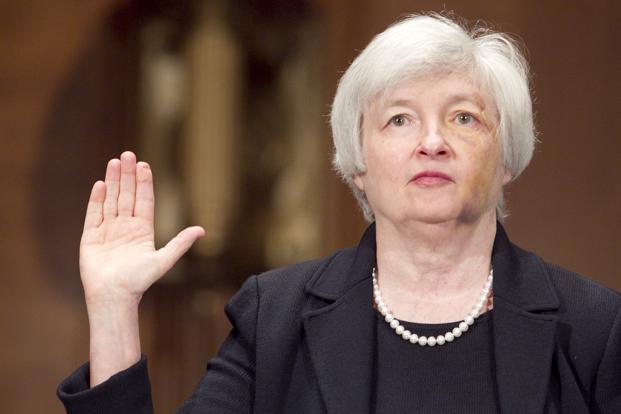
Forex Trading Fundamental Analysis Masterclass – Part 10
In the previous part, we looked at the most influential decision-makers in the forex market – namely the central banks – and how they come to make decisions on monetary policy. Today, we shall be looking at some of the factors that can influence these decisions – the economic fundamentals that are at the heart of fundamental analysis. These can wield an influence over the strength or weakness in the long term of the major currencies.
Economic Growth and Outlook
The strength of the economy – coupled with the widespread perception of its strength – is probably the most important factor weighing on long-term currency trends. When consumers perceive the economy to be strong, they feel more secure and optimistic, and are therefore much more likely to spend money. With people spending more, companies are earning more, and therefore have more to spend in their own right.
When a company has money, they tend to spend it, and this creates tax revenue for the government. With the government now having more money, they start spending more as well, and with consumers, companies, and government upping their spending, the economy is boosted.
The opposite is true when the economy is perceived to be weak. Consumers get more pessimistic and insecure, and hold off spending in case they need the money for possible hard times to come. If consumers don’t spend, businesses don’t make money and therefore don’t spend, and the government has reduced tax revenue and therefore has less to spend – and will probably have to run up large deficits to keep essential services going. So, we can see that the strength or weakness of an economy can have a big impact on currency values.
Capital Flows
The internet, technological advances, and globalization have all made it much easier to invest money pretty much anywhere in the world. So, no matter where you are, you can invest in the New York Stock Exchange, The Nikkei, or the London Stock Exchange, or you could trade US dollars, yen, euros, and a whole host of other currencies with an online forex trading account.
Capital flows are a measure of the amount of money that is flowing into and out of a country or economy in terms of investment in its capital markets. The most important aspect of this is, from a fundamental analysis perspective, is whether this flow is positive or negative.
When there is a positive capital flow balance for a country, it means that foreign investments coming into the country are greater than investments heading out of the country. Conversely, a negative capital flow balance means that investments leaving the country for another country are greater than investments coming in.
When there is more investment coming into a country, the demand for that country’s currency increases, because foreign investors are having to sell their currency to buy the local currency, causing the currency to increase in value due to the forces of supply and demand.
If supply is high for a currency, or there is a weak demand, then the currency will tend to fall in value. This happens when overseas and domestic investors pull their money out of the market and put it into a (presumably more profitable) overseas market instead. This produces an abundance of the local currency, which everyone is selling to buy the currency of the country or economy they are switching their investments to.
What makes a country attractive to foreign investors? Basically, anything that is likely to make investing in that country more profitable, such as strong economic growth, a booming stock market, and high interest rates. When this happens, the demand for the local currency increases, and it goes up in value.

Trade Flows & Trade Balance
As is the case with capital market investments, imports and exports can also influence the supply and demand of a currency. Most of the goods that surround us, from electronic gadgets to clothes, is made overseas and imported into the country.
Whenever you buy something, you need to spend some of your money, and whoever you buy that thing from has to do the same in order to have it in stock. When a UK importer buys from a Chinese supplier, they need to exchange money, and the same happens when a Chinese importer buys goods from the US. These transactions influence the flow of currency into and out of a country.
The trade balance, also known as the balance of trade or net exports, is a measure of the ratio of exports to imports for a given economy. It shows the demand for that country’s good and services, and ultimately it’s currency.
- If exports are higher than imports, a trade surplus exists and the trade balance is positive.
- If imports are higher than exports, a trade deficit exists, and the trade balance is negative.
When a country has a trade deficit (a negative trade balance), it tends to push the currency price down in comparison with other currencies. Net importers (countries that import more than they export) have to sell their currency in order to buy the currency of the foreign merchant who’s selling the goods they want. When there is a trade deficit, the local currency is being sold to buy foreign goods, and this leads to that country’s currency being less in demand than that of a country with a trade surplus.
On the other hand, net exporters (countries that export more than they import) see an increase in demand for their currency, as it is being bought more by countries interested in buying the exported goods. Because of this, it gains in value, and currencies in higher demand tend to be valued higher than those in less demand.
Other articles in this series:
Forex Trading Fundamental Analysis Masterclass Part 1
Forex Trading Fundamental Analysis Masterclass Part 2
Forex Trading Fundamental Analysis Masterclass Part 3
Forex Trading Fundamental Analysis Masterclass Part 4
Forex Trading Fundamental Analysis Masterclass Part 5
Forex Trading Fundamental Analysis Masterclass Part 6
Forex Trading Fundamental Analysis Masterclass Part 7
Forex Trading Fundamental Analysis Masterclass Part 8
Forex Trading Fundamental Analysis Masterclass Part 9
Forex Trading Fundamental Analysis Masterclass Part 10
Forex Trading Fundamental Analysis Masterclass Part 11
Forex Trading Fundamental Analysis Masterclass Part 12
Forex Trading Fundamental Analysis Masterclass Part 13
Forex Trading Fundamental Analysis Masterclass Part 14
Forex Trading Fundamental Analysis Masterclass Part 15
José Ricaurte Jaén is a professional trader and Guest Editor / community manager for tradersdna and its forum. With a Project Management Certification from FSU – Panama, José develops regularly in-house automated strategies for active traders and “know how” practices to maximize algo-trading opportunities. José’s background experience is in trading and investing, international management, marketing / communications, web, publishing and content working in initiatives with financial companies and non-profit organizations.
He has been working as senior Sales Trader of Guardian Trust FX, where he creates and manages multiple trading strategies for private and institutional investors. He worked also with FXStreet, FXDD Malta, ILQ, Saxo Bank, Markets.com and AVA FX as money manager and introducing broker.
Recently José Ricaurte has been creating, and co-managing a new trading academy in #LATAM.
During 2008 and 2012, he managed web / online marketing global plan of action for broker dealers in Panama. He created unique content and trading ideas for regional newspaper like Capital Financiero (Panamá), La República (Costa Rica), Sala de Inversión América (Latinoamérica) and co-developed financial TV segments with Capital TV.
He is a guest lecturer at Universidad Latina and Universidad Interamericana de Panamá an active speaker in conferences and other educational events and workshops in the region. José Ricaurte worked and collaborated with people such as Dustin Pass, Tom Flora, Orion Trust Services (Belize) and Principia Financial Group.









































